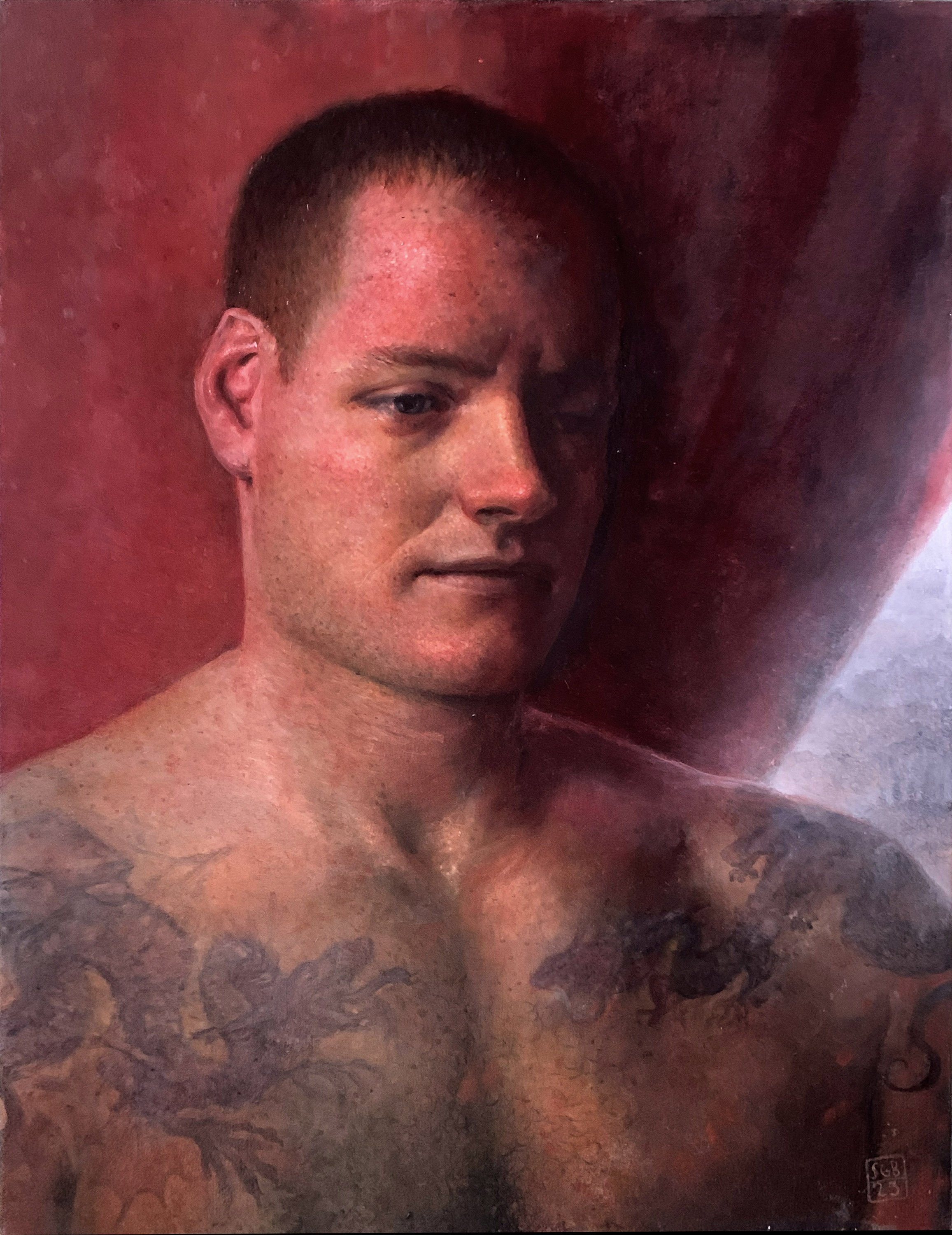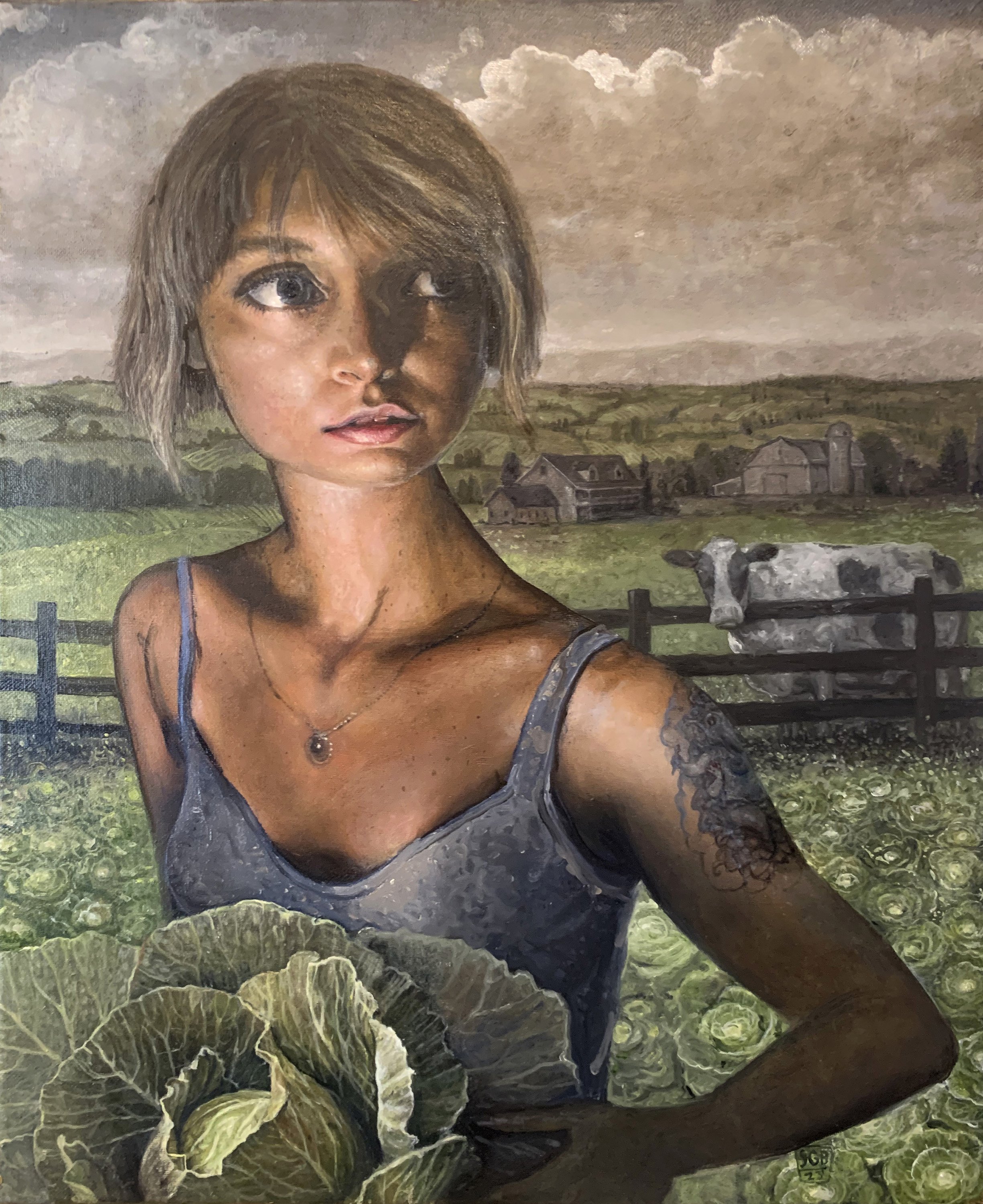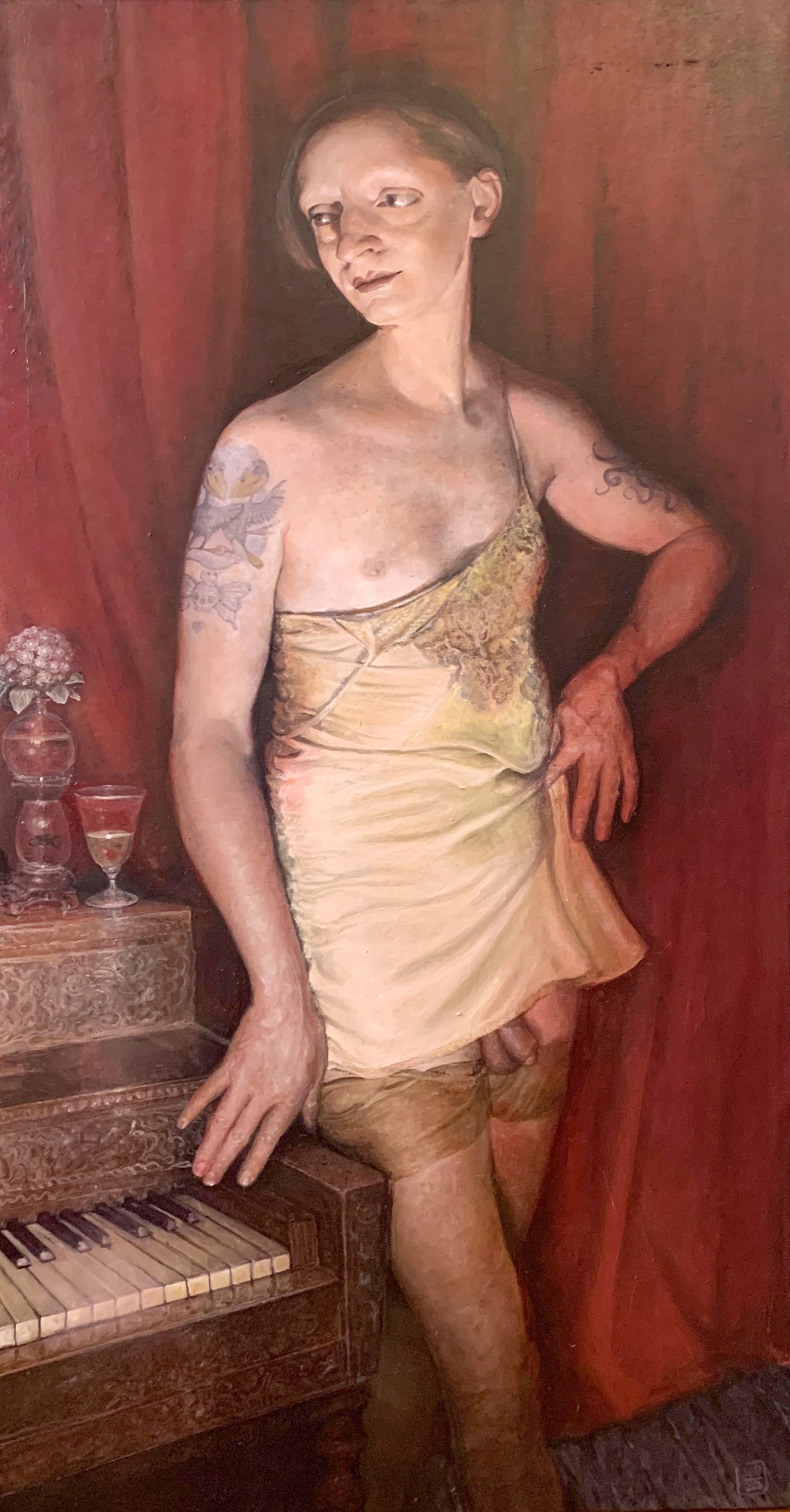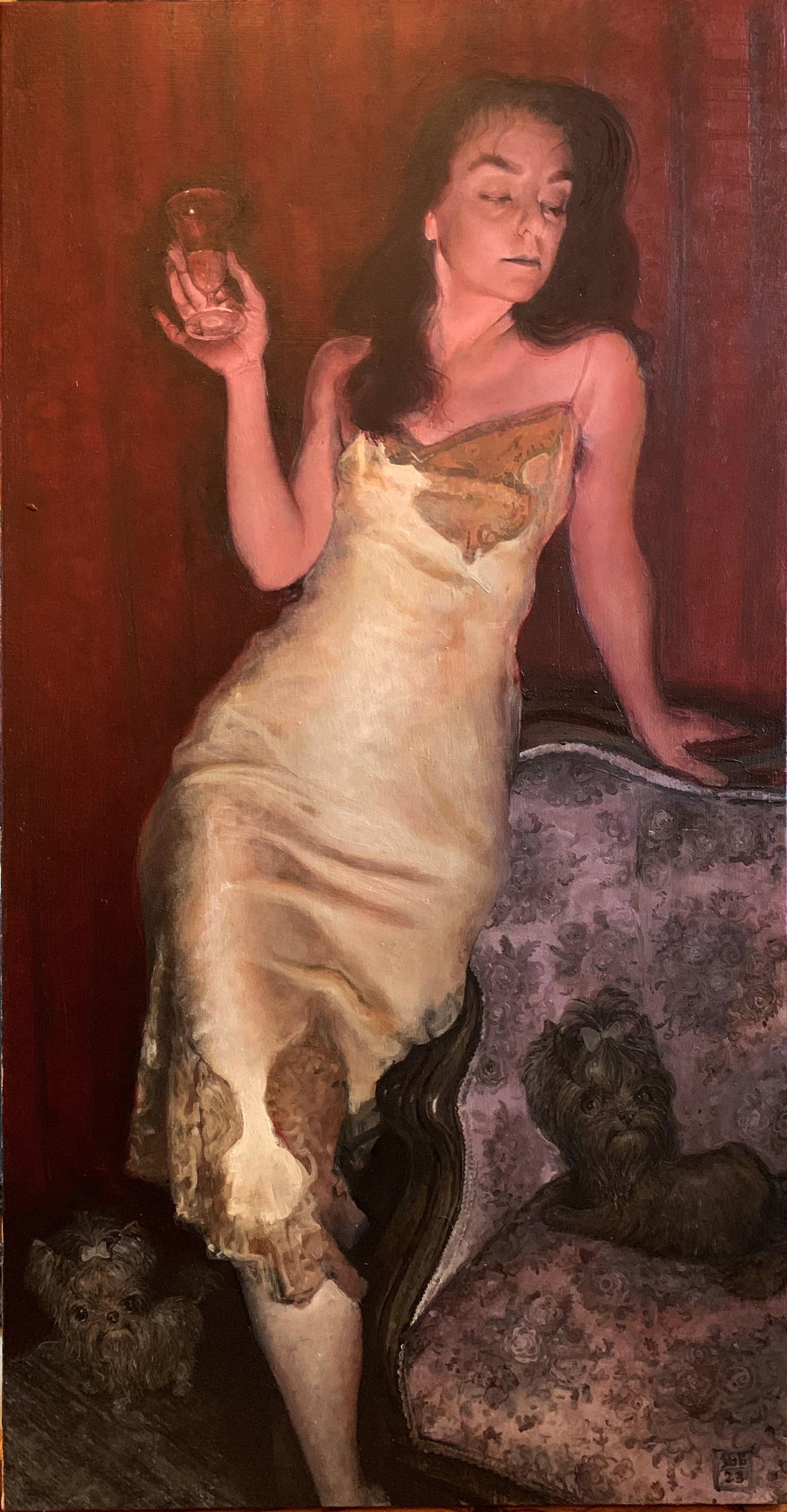I use the figure to create surreal and mildly inappropriate imagery, from simple portraits to complex narratives.
What influenced your art style?
My early influences were TV, movies, and comic books. Being from Michigan I also recall being influenced by wildlife artists. There were some beautiful religious paintings at the church we attended, that I would stare at while attending mass. My parents had some very interesting and unusual art hung in the house, from Margaret Keane knockoffs to Dutch master knockoffs, several of which I now have hanging up. Specific elements such as ruff collars or horse drawn carriages continue to be a staple of my work. Over the years I’ve been drawn to specific movements such as the pre-Raphaelites, and more artists than I can list, but they include Cadmus, Bosch, and Rockwell.
How has AI changed your work?
I don’t think AI has changed my work yet. From my perspective it seemed to just come out of nowhere. I can turn my nose up and dismiss it, but it's obviously here to say. The elaborateness of it is daunting but also inspiring in a weird way. My work has always been fantastical and detail forward so I can’t help seeing it as competition of some sort. Pixar and CG has definitely changed the way I see the world and create, and over time I think AI will as well. Just as photography moved painting into new directions, I predict AI will as well, but it’s just too early to see what direction that will be. One thing for sure is that AI won’t be able match the effects of traditional painting and making art anytime soon.
What role does your artwork have in society?
My work plays the role of the non-conformist. I live in a world filled with bears, cubs, otters, mermaids, kitties, puppies, witches, fairies, pagans and atheists. As someone who has often felt marginalized, I feel comfortable with those who share that experience. These are the people I include in my work—my neighbors, coworkers, drinking buddies, and loved ones.
As a gay man, existing has become a political act, and I once again find myself in a time where people like me and my friends face demonization. This is not new to me and it seems to recur every decade or so. I accepted long ago that there will always be people who hate me simply for living my life. I am privileged to live openly and safely, while so many people live in fear or risk their lives for speaking up and being who they are. Given the current climate of anti-LGBTQ+ laws and propaganda, I feel a responsibility to be more public about who I am and the work I do. I hope my work speaks to that weird kid somewhere and can help unlock something in them that’s buried or has been pushed down. I’d like to give someone the courage to stand out and not feel forced to conform to the rigidity of society.
What concept or narrative is behind your work?
My work is primarily narrative, and while I try to communicate new and different ideas in each one, there are a few recurring themes. Being an outsider is common in my work. Impending doom and some sort of mental or physical impairment pop up quite a bit as well. Religion and spirituality - both pro or con, comes into play, as does sexuality, either as an underlying theme or in a more direct style.
Do you ever venture out of your creative process to try out new things?
I spend most days painting, but am occasionally dragged out of my comfort zone and try new things. Back in 2020 I was invited to audition for a reality art show that would have pitted me against other artists. That went against just about everything I believe in but rather than a flat no I went along and had several interviews with casting agents and producers. That was way outside my comfort zone. Ultimately I was not selected, the show recently aired and most artists panned it. I have not watched it, and also relieved I was not selected.
TikTok was another venture that I tried and ended up enjoying. More traditionally I dabble in the occasional sculpture, and I also work digitally quite a bit. I recently opened a shop on Threadless and have a line of tshirts for sale there. Creating those designs forced me to think about ways to simplify my work and what I’m trying to say, which could be very useful in my traditional work as well.
Which was your breakthrough piece? Tell us more about it.
I think my first breakthrough piece was from 1997. It’s a large oil on canvas piece called “Light Sources of the Body and Sole” and takes place in a church. I had been working hard for many years to be more traditionally representational, but realized that was becoming painful and limiting. There were enough academic and photorealist painters out there I thought I would try something new. I had been drawing these little cartoons characters with exaggerated wide-set eyes and large heads, so I thought I’d try that in my “Art”. This piece was one of the first and by far the most elaborate. I still have it hanging in my studio today. It was a style that confused people but it also made my work very easy to recognize. Eventually it seemed like everyone was painting figures with big heads and wide-set eyes so I have slowly begun going back to a more traditional style and being a bit more subtle with the distortions.






